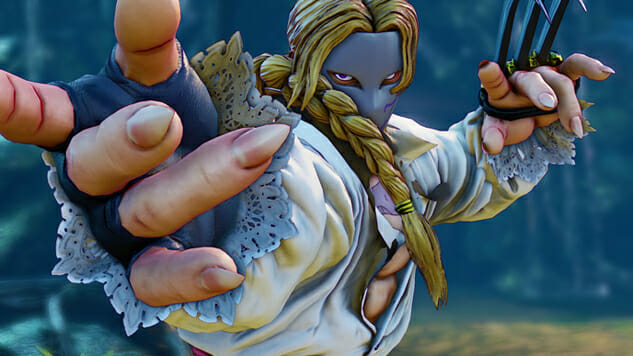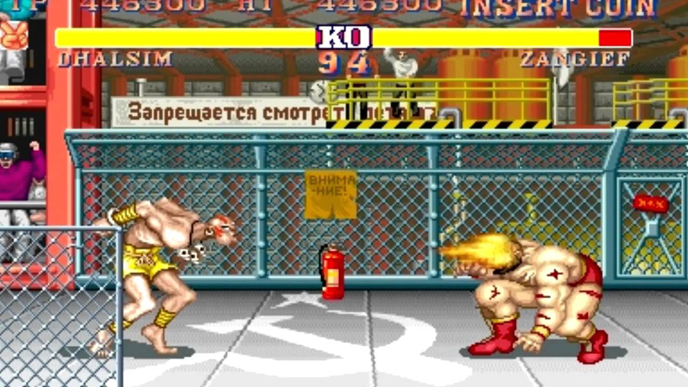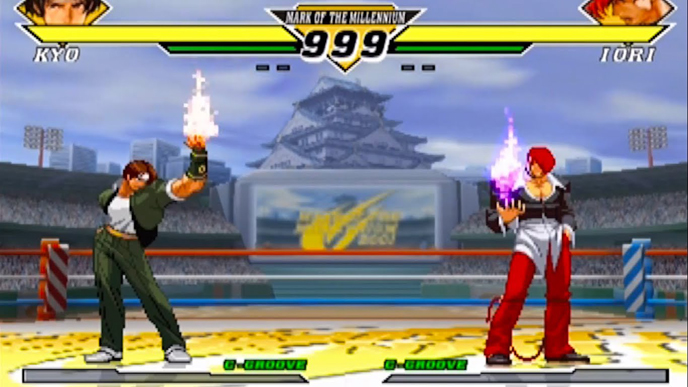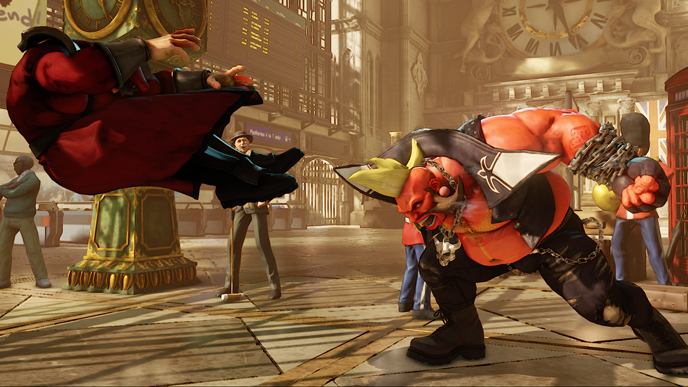
As with any piece of software, experiencing regular glitches in videogames has, unfortunately, become par for the course. These anomalies run the gamut from amusing distraction to game-crashing nuisance, but in the world of competitive fighting games, glitches can sometimes mean the difference between victory and defeat.
The most important of these came way back during the early 1990s, when fighting games were in their infancy and developers were just coming to understand what players wanted out of a competitive title. During the creation of Street Fighter II, the pioneers at Capcom accidentally stumbled on a concept that set the genre on an entirely different course.
According to Street Fighter II’s lead designer Akira Nishitani, his team implemented additional input leniency in an effort to make special moves easier to execute. But this came with an unintended side effect: players could now string basic attacks and special moves together into combinations (popularly known as combos), a feature that would go on to form the core of the entire genre.
“We thought this was quite interesting, and it didn’t seem to cause any bugs, so we decided it could be a feature to expand the gameplay,” Nishitani explained to journalist Nick Des Barres in 2013. “It wasn’t something we anticipated, but since we decided to incorporate it into the game during development, I wouldn’t call it a bug.”
Many players don’t understand that playing a fighting game is not just about defeating an opponent; often they are struggling against the developers themselves. While the genre has transformed over the last couple decades, players are still confined by the personal philosophies of the creators themselves. If the Street Fighter II developers had ‘fixed’ the undesired result of their work instead of turning it into a feature, there’s no telling where fighting games would be today.
It’s a general sentiment in the fighting game community that the real potential of a title can only be reached when competitors get their hands on it. Developers may have their own ideas of where gameplay may lead, but a game’s evolution is truly realized in practice sessions and tournaments. Squeezing out that extra hit or bit of damage often comes from disregarding the systems in place and breaking a fighting game as much as possible.
That’s where glitches come in. The competitive community has always had a strained relationship with them, preferring to rely on skill instead of exploit a mistake. But they’re often the best way to push a game to its limits. Sometimes, these discoveries even have the potential to make the game more balanced.
A classic example of this came with the release of Capcom vs. SNK 2 in 2001. The crossover title featured characters and mechanics from the eponymous studios’ most popular franchises—Street Fighter, Darkstalkers, King of Fighters, Samurai Shodown—and is often touted as one of the crowning achievements of the genre. But without the discovery of a single unintended technique, it’s easy to see how this legendary release could have been forgotten.
Roll canceling is exactly what it sounds like. By interrupting the earliest parts of a roll animation with a special or super, that attack is granted the best parts of the roll, most notably invulnerability from incoming offense. The timing is tough, but the rewards are immense; in utilizing this glitch, players are able to find success with a wider range of characters, effectively balancing the game by accident.
“When roll canceling was discovered in Capcom vs. SNK 2, there was simply no way to ban it,” fighting game community veteran James Chen reminisces. “We just had to accept and play with it. Ironically, it made Capcom vs. SNK 2 a better game in many ways, because there was never any hope for a patch or a fix in the future. Back then, you either accepted a glitch, banned it if it was obvious enough to see when used, or you just stopped playing the game.”
Fighting game history is filled with these sorts of glitches. From the Valle Custom Combo setup in Street Fighter Alpha 2 (named for its most deadly practitioner, Alex Valle) to Ultimate Marvel vs. Capcom 3’s infinite combos, players have learned to adapt as these aberrations were discovered, merging them with basic knowledge of the genre to turn their favorite games into entirely different beasts.
Of course, not every glitch can be used to player benefit. Recently, it was found that Birdie’s hurtbox (that is, the space around a character’s model that the opponent’s attack must come into contact with to deal damage) completely disappears while descending from a jumping light kick in Street Fighter V. While the glitch was obviously corrected by Capcom in a subsequent patch, it’s not always apparent how a technical flaw will affect gameplay without letting it rock.
“If a glitch doesn’t necessarily break anything and can maybe actually be cool, leave it in,” Chen continues. “Guilty Gear is notorious for this, having never removed things like Jump Installs, which were clearly unintended. In fact, that whole ‘glitch’ has since been embraced by the developers. It’s taught during in-game tutorials and clearly understood when it comes to balancing characters. As such, a hard rule on whether a glitch should be fixed right away or given room to breathe can’t be made. It really has to be evaluated on how negatively it affects the game.”
One man intimately familiar with both the competitive and developmental sides of the fighting game community is Mike Zaimont of Lab Zero Games. As a player, Zaimont is credited with uncovering several important glitches in Marvel vs. Capcom 2, and as a designer and programmer, he has been responsible with guiding the evolving gameplay of indie hit Skullgirls.
Apart from using his knowledge to bestow the scene with a brand new fighting game, Zaimont’s most important contribution to competitive play has to be his discovery of a Magneto technique in Marvel vs. Capcom 2 dubbed the Grav-Tempest. The glitch, which allows the projectiles of the Magnetic Tempest super to come out much sooner than they actually would by canceling the Hyper Gravitation special’s early animation frames, became a key part of Magneto’s gameplay moving forward.
“Adding special-to-super cancels in Marvel vs. Capcom 2 had a lot of unintended side effects,” Zaimont says. “It must have been something they did fairly late in the project, to encourage people to use supers, but as with most things, their intuition in terms of what made the game better (or their straight luck, we’ll never know) was spot on. For everything that ended up busted, Marvel vs. Capcom 2 innovated so much that it’s pretty amazing regular gameplay is as glitch-free as it is.”
Much like with Capcom vs. SNK 2, there were also bugs present in Marvel vs. Capcom 2 that served to balance the game, some of which Zaimont believes may have been removed early on if adequate patching procedures were available to the developers.
Without Pushblock Guard Canceling, characters like Spiral and Sentinel would be able to keep opponents in blockstun, a state that effectively keeps blocking players from attempting any actions for a specific amount of time, indefinitely. Juggernaut, one of the game’s weakest characters, would have been completely ignored if not for the ability to easily and permanently apply his Cyttorak power-up during gameplay. And defense against the utter barrage of rushdown attacks facilitated by Marvel vs. Capcom 2’s hectic engine would be impossible if pushblock animations didn’t aim low and high at the same time.
“These glitches probably helped inform my attitude as a developer, which is wait and see whether something is beneficial before having a knee-jerk reaction and addressing it,” says Zaimont. “The nerf to Sentinel’s health in Marvel vs. Capcom 3 is a decent example of a pre-emptive fix that turned out to be detrimental.”
No matter what public perception said of these glitches at the time, one thing remained the same: they had to be dealt with. Learning to adapt around unintended bugs and incorporate them into gameplay became a way of life. Players could complain to the developers, sure, but with no way to quickly update the games, their concerns couldn’t be addressed in a timely fashion. They became part of the game, for better or worse.
Of course, mechanics (intended or not) have a way of endearing themselves to a community, and Zaimont carried over his experiences playing Marvel vs. Capcom 2 into the development of Skullgirls. Pushblock guard cancel? That’s in Skullgirls. The ability to block both low and high at the same time? That too. And instead of being glitches, this time around they’ve been included as ‘official’ mechanics.
“I believe in knowing as much as possible about your chosen area of expertise, and I strongly believe that knowledge is power,” Zaimont explains. “Whatever people may think of my game, having first-hand experience of the effect glitches had on shaping_ Marvel vs. Capcom 2_’s gameplay helped me make decisions that ensure Skullgirls ended up a reset-based game, even years later with optimized combos and damage.”
Even though the folks at Lab Zero can fix any unintended consequences of their development on Skullgirls in a timely manner, they aren’t above incorporating glitches if they improve upon the game. One such bug is the burst alpha counter, an advanced mechanic that takes a bit of explaining to understand.
At their core, alpha counters allow players to counter an opponent’s attack while blocking. Instead of simply using a special attack, however, Skullgirls tags in another member of a player’s team to perform the alpha counter. Bursts, on the other hand, are techniques that act as a sort of ‘Get Out of Jail Free’ card by giving you the opportunity to escape a combo. While there are multiple uses for both, they’re mostly used as defensive options during a match.
As the name suggests, burst alpha counters combine these mechanics, calling in the next character during the current character’s burst. In games with burst techniques, it’s smart to have a few setups in your back pocket that trick the opponent into wasting it, ensuring your chance to kill without interruption. As such, Zaimont said burst alpha counters became a “rather elegant” way to avoid those burst baits.
“Even though I would have never thought of burst alpha counters myself, I kept it in Skullgirls,” he says. “I cleaned up the implementation to make it possible in a much larger window after bursting and left it in. Since then, it’s become an integral part of the game, especially with the added importance of burst baits in high-level play.”
Now that developers can patch their releases on the fly, it’s difficult to discover glitches that aren’t fixed within the next update. Thus, players have taken a perverse pleasure in exploring fighting games of the past for mind-blowing and oddly beautiful glitches, some of which still have no real explanation for their origins. One of the best resources for fighting game glitches these days is the Twitter account of a fan named Dean Hayes, otherwise known as D-NO. On any given day, D-NO’s timeline is a veritable stream of fighting game content, often revolving around the weirdest interactions he could dig up in a wide variety of titles.
“It wasn’t until a few months ago that I took a more active interest in fighting game glitches and general misbehavior,” D-NO explains. “Back in July, a buddy and I, at a loss for which fighting game we should play one night, decided on King of Fighters 2002. Through some combination of my friend not knowing how to play Ramon and me not knowing how to fight against him, we accidentally got him to bug out, and I recreated it later for Twitter.”
From there, D-NO began to build an audience, giving him a shot at learning the ins and outs of a number of unique and often hilarious fighting game glitches. Since he was playing older fighting games anyways, he figured he could share a bit of history with the rest of the community, which has greatly expanded since the classics first launched.
“Mostly though, it’s just fun,” he admits. “It’s fun to discover that all this crazy stuff exists in these games and you’ve never known about it. It’s fun figuring out how to replicate glitches yourself, how they work, and what makes them work. It’s fun seeing people react to a glitch for the first time, often in the same way you did! I guess, in some small way, I can also help ensure that this old stuff isn’t forgotten, or maybe even encourage people to look for glitches in the games that they play.”
But even if glitches in new titles are removed as fast as they can be discovered, exploring the finer details of a game’s development can give one a greater appreciation for the work the creators have put into their projects. It’s easy to sit back and scoff at Capcom for missing something like the Vega glitch in Street Fighter V, but even the most ridiculous bugs reveal a great deal of what makes fighting games, with their myriad mechanics, tick.
“Now, when we see glitches, most people just wait for them to be patched out,” James Chen concludes. “And for some reason, folks get really indignant about it, citing glitches as proof that a game is ‘poorly made.’ Which makes me laugh, because the people who say that obviously have no clue what it takes to make a videogame.”
In other genres, glitches may be the final straw that eventually force a player to give up on a release. But in the world of competitive fighting games, they are responsible for elevating good titles to almost legendary status. Sure, they can often be a nuisance, but with history stretching back to unforgiving arcades in pool halls and laundromats, the fighting game community has learned to accept (if, perhaps, begrudgingly at times) the hand glitches have had in making their favorite games endearing and enduring parts of their lives.
So, the next time you see something wacky in the latest Street Fighter or Guilty Gear game, take a moment to appreciate the silliness of the past…before figuring out a way to use it against your opponents, of course.
Ian Walker is a freelance writer who is trying his best to cover the world of fighting games even if he’s not all that good at them. You can find him on Twitter at @iantothemax.


